SOURCE: AFI


The progression of Chinese military aviation technology over the last few decades has been remarkable, particularly when compared to the development trajectory of India’s indigenous fighter jet programs. This article examines the significant milestones of China’s J-10, J-20, and the newly introduced J-36 against the backdrop of India’s Tejas Mk1 program.
The Chengdu J-10, also known as the Vigorous Dragon, marked China’s entry into the arena of fourth-and-a-half generation fighters. Designed initially to compete with the likes of the American F-16, the J-10 was a significant step, showcasing China’s ability to engineer advanced combat aircraft independently.
Continue readingSOURCE: AFI
)

In an era where stealth technology is becoming a cornerstone of modern air forces, New Delhi is at a pivotal point in its military aviation strategy. According to aviation expert Andreas Rupprecht, India might need to pivot towards acquiring existing stealth fighters rather than solely focusing on domestic development. The primary option for New Delhi in this scenario would be the American Lockheed Martin F-35 Lightning II, which stands out as one of the few fifth-generation fighters available for international sale.
The F-35 is renowned for its advanced stealth capabilities, sensor fusion, and network-centric warfare features, making it a formidable choice for enhancing India’s air combat capabilities. However, the acquisition of such sophisticated technology involves not only high financial costs but also complex diplomatic negotiations, given the sensitive nature of the technology and the political implications of such a deal with the United States.
Continue readingSOURCE: AFI
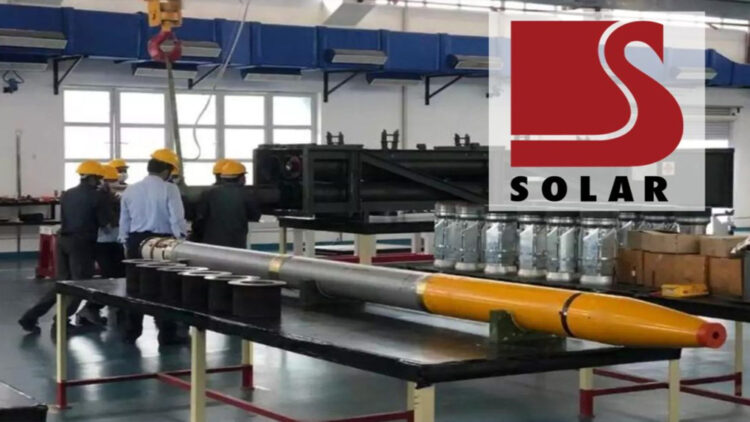

In a notable advancement for India’s defense sector, Solar Explosives, a key player in the munitions industry, has announced significant improvements in the production rate of the Pinaka MkII rockets. The company has managed to reduce the manufacturing time for each unit of the Pinaka MkII from the previous 50-55 days down to just 14-15 days, showcasing a remarkable enhancement in efficiency.
This leap in production speed from the older Pinaka MkI to the MkII variant underscores Solar Explosives’ commitment to innovation and operational excellence. The Pinaka, a multi-barrel rocket launcher system, has been pivotal in bolstering India’s artillery capabilities, offering extended range and precision in battlefield scenarios.
Continue readingSOURCE: AFI


In a strategic move to bolster defense cooperation with Vietnam, India has offered its advanced counter-drone systems to the Vietnam People’s Air Force (VPAF). This proposal comes at a time when concerns over swarm drone attacks on military installations are rising globally. The systems in question include both hard kill and soft kill technologies, aimed at providing comprehensive security against one of the modern threats to airbase infrastructure.
Hard Kill Systems are designed to physically destroy incoming drones. India’s offerings in this category include missile-based interceptors and laser systems capable of engaging and neutralizing UAVs (Unmanned Aerial Vehicles) at various ranges. The DRDO (Defence Research and Development Organisation) has developed systems like the D-4, which uses laser-based technology for a direct “hard kill” approach against drones.
Continue readingSOURCE: RAUNAK KUNDE / NEWS BEAT / IDRW.ORG


In a series of discussions with the Ministry of Aviation, Indian private aerospace companies have strongly advocated for the adoption of an existing aircraft design for the development of a regional airline tailored for short-haul flights within the country. This approach, they argue, would significantly reduce development costs and mitigate the risks associated with starting from a “clean slate” design, given India’s current limitations in testing facilities for such ambitious projects.
The private sector has pointed out that by leveraging an established design, India could bypass the extensive and costly R&D phase typically associated with new aircraft development. This would not only speed up the time to market but also lower the financial risk, which is particularly appealing in an industry where costs can escalate quickly.
Continue readingSOURCE: RAUNAK KUNDE / NEWS BEAT / IDRW.ORG


India’s defence capabilities are set to scale new heights with the development of the S5-class SSBN (Submersible Ship Ballistic Nuclear) submarines. With a proposed submerged displacement of 13,000 tons, the S5-class submarines will mark a significant advancement in India’s nuclear triad, ensuring a robust second-strike capability. These submarines are designed to carry a formidable arsenal of 16 ballistic missile tubes, equipped with K-5 and K-6 MIRV (Multiple Independently Targetable Reentry Vehicle) SLBMs, with ranges of 5,000 to 8,000 kilometres.
Initially, the S5-class SSBN was planned to feature 12 missile tubes, with six on each side of the submarine. However, the design has been revised to accommodate eight tubes on each side, increasing the submarine’s capacity to carry 16 long-range ballistic missiles. This significant enhancement underlines India’s commitment to maintaining a credible and potent deterrence in a rapidly evolving strategic environment.
Continue readingSOURCE: RAUNAK KUNDE / NEWS BEAT / IDRW.ORG
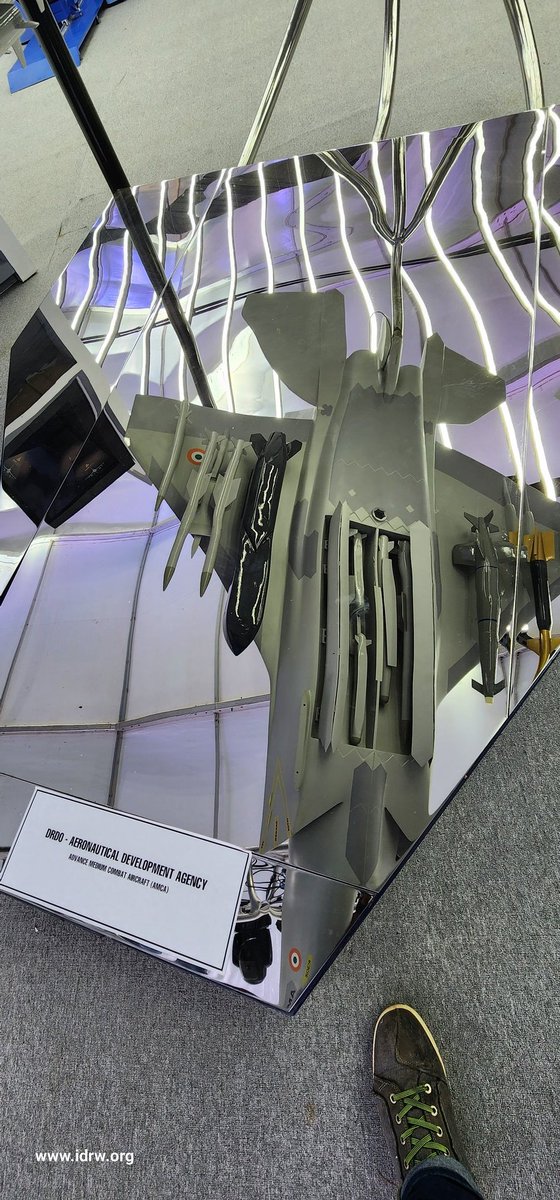

The development of the Advanced Medium Combat Aircraft (AMCA) has been one of India’s most ambitious and strategic aerospace programs. A key feature of the AMCA is its design for stealth capabilities, and to ensure that this feature is fully realized, the aircraft will be equipped with an Internal Weapons Bay (IWB). This design choice is integral for maintaining low Radar Cross Section (RCS), a critical factor for enhancing the aircraft’s ability to evade detection by enemy radar systems.
Recent developments by the Aeronautical Development Agency (ADA) and the Defence Research and Development Organisation (DRDO) have provided significant insights into the AMCA’s IWB, particularly its compatibility with India’s Astra BVRAAM (Beyond Visual Range Air-to-Air Missiles). Through extensive computer simulations and data collection, ADA and DRDO have confirmed that the AMCA’s IWB can effectively accommodate both Astra Mk1, Astra MkII and Astra MkII missiles without requiring any modifications to the airframe of the missiles.
Continue readingSOURCE: AFI
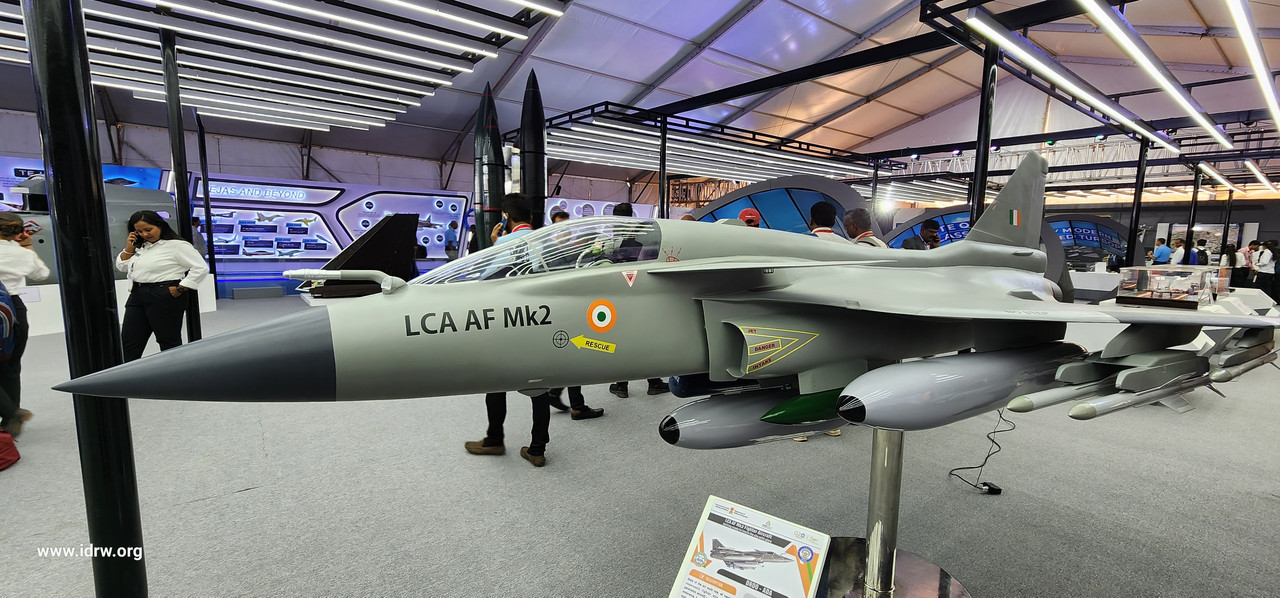

China recently unveiled and flew its next-generation stealth fighter jet, sparking a significant debate in the Indian defense community. Some voices advocate for cancelling the Tejas MkII program in favor of acquiring a 5th-generation fighter jet from abroad while focusing on the Advanced Medium Combat Aircraft (AMCA), slated for induction by 2035. However, the Tejas MkII remains a critical asset for the Indian Air Force (IAF), designed specifically to meet operational challenges posed by the People’s Liberation Army Air Force (PLAAF) and its integrated air defense systems (IADS).
The Tejas MkII is not just a continuation of its predecessor but a significant leap forward in terms of capabilities. Its design incorporates advanced avionics, an upgraded engine, and increased payload capacity, making it suitable for countering the PLAAF’s formidable IADS. Unlike imported aircraft, the MkII can be customized and upgraded in response to evolving threats, ensuring it remains relevant over its lifecycle.
Continue readingSOURCE: AFI


A recent unveiling of China’s purported 6th generation fighter jet has sparked discussion within the global aerospace community, and former Indian Air Force (IAF) Mirage-2000 pilot, Sameer Joshi, has offered a noteworthy perspective. While acknowledging a potential weakness in the aircraft’s vertical performance due to its three-engine configuration, Joshi emphasized China’s pragmatic approach to development and its impressive track record of rapid technological advancement.
Joshi observed that “The 3 engine design does show this vertical lacking in China.” This suggests that the aircraft might not possess the same level of vertical thrust or maneuverability as designs with different engine configurations. However, he quickly added, “What is however remarkable is that the Chinese are not preventing this to hamper the development of this next-gen design with so many operational advantages.”
Continue readingSOURCE: AFI


Recent high-resolution images of China’s latest stealth aircraft have provided defense analysts with a wealth of new details, painting a picture of a formidable addition to China’s air force capabilities. Here are some key observations from these images.
This new aircraft significantly outclasses the J-20, one of China’s current top-tier stealth fighters, in terms of size. While the J-20 has a wingspan comparable to the American F-22 Raptor at around 13 meters, the new jet boasts a wingspan that appears to be approximately 20 meters. This larger size suggests a focus on payload capacity, range, or both, positioning it as a potentially heavy strike aircraft.
Continue readingSOURCE: AFI


In what could mark a significant leap forward for regional aviation in India, a team of researchers from the Indian Institute of Science Education and Research (IISER) Mohali and the Indian Institute of Technology (IIT) Kanpur has unveiled the D-12 Salamander, securing the third prize at the prestigious Indian Light Aircraft Design (ILAD) 2024 competition. This innovative aircraft design promises to enhance air connectivity across the nation, particularly under the UDAN (Ude Desh Ka Aam Nagrik) initiative.
Developed by Prasenjit Das from IISER Mohali and Prof. Prodyut Das from IIT Kanpur, the D-12 is tailored for regional air travel. The aircraft is designed to seat 20 passengers but can be economically and efficiently stretched to accommodate up to 40 without the need for further certification. This modularity is a key feature, offering airlines a flexible solution to match demand while keeping costs down.
Continue readingSOURCE: IDRW.ORG


In the wake of China’s recent demonstration of its advanced aerial capabilities with two sixth-generation fighter jets taking to the skies, there’s a clarion call for India to hasten its own program. Defence Analyst Ranesh Rajan, speaking exclusively to idrw.org, has emphasized the urgency of not waiting until 2040 to initiate a 6th generation fighter jet program in India.
Rajan insists that the Aeronautical Development Agency (ADA) should immediately begin conceptualizing and designing the 6th generation fighter jet following the first flight of the Advanced Medium Combat Aircraft (AMCA). He proposes a firm deadline for the design phase, targeting its completion by 2035. This timeline aligns with the projected production start date of the AMCA, suggesting that the team behind AMCA could pivot to the new project without significant delay if initial funding is secured before 2030.
Continue readingSOURCE: IDRW.ORG
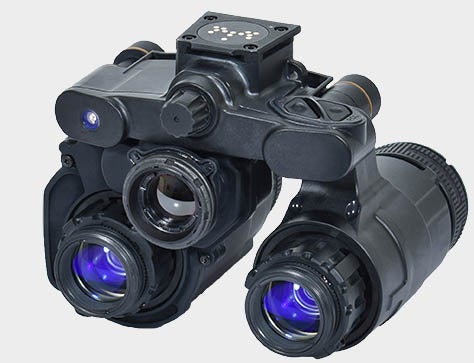

The Instruments Research and Development Establishment (IRDE) has embarked on the development of next-generation Enhanced Night Vision Sights (ENVS), which aim to significantly enhance the capabilities of personnel in low-light and night operations. This ambitious project involves the creation of two distinct versions of the ENVS: the Enhanced Night Vision Binocular (ENVB) and the Enhanced Night Vision Weapon Sight (ENVWS).
The project will produce a total of four units of each version, including one prototype and three engineered units for further evaluation and use. These devices will be delivered with comprehensive support accessories, including carrying cases, rechargeable batteries, chargers, mechanical adapters, test reports, and other required documentation.
Continue readingSOURCE: AFI


The Indian Air Force (IAF), a critical component of India’s defense strategy, has faced significant challenges in maintaining and modernizing its fleet over the last two decades. A closer look at the fighter jet orders during two successive decades under different governments reveals a pattern of delays, cancellations, and a struggle to keep pace with the rapid advancements in aerial warfare technology.
During the ten years from 2004 to 2014, under the leadership of the United Progressive Alliance (UPA), the IAF managed to order 122 fighter jets. This included 82 Su-30MKI, These Russian-made jets were part of a long-standing acquisition program to bolster the IAF’s air superiority capabilities. The Su-30MKI, with its dual-seat configuration, has become a backbone of the force, known for its versatility in both air-to-air and air-to-ground roles.
Continue readingSOURCE: AFI
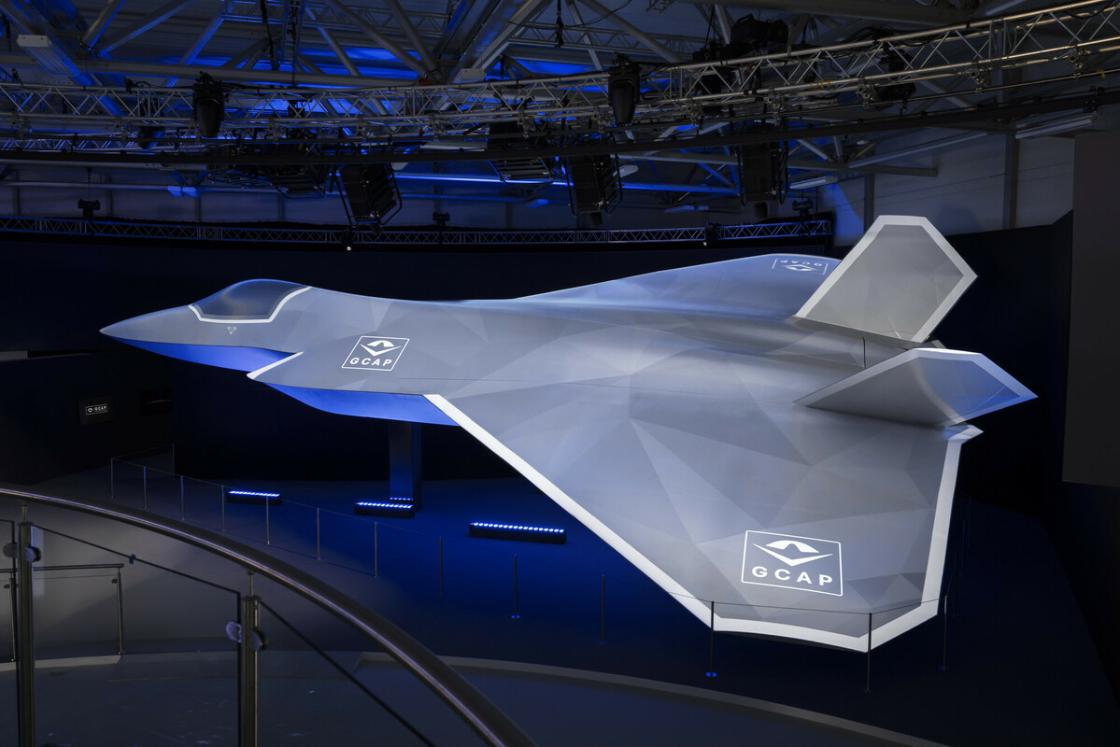

In the wake of China’s startling reveal of two 6th generation fighter jet programs on Christmas Eve, the strategic landscape of global military aviation has shifted dramatically. This development has sparked a renewed debate on how nations like India should respond to keep pace with rapid advancements in defense technology. One pivotal question on the table is whether India should join the Global Combat Air Programme (GCAP) as an observer, especially given the keen interest from founding members Italy, Japan, and the UK to expand their collaborative efforts.
By participating as an observer in the GCAP, India would gain insights into the latest developments in 6th generation fighter technology. This could include advanced stealth capabilities, artificial intelligence integration, and autonomous systems, which are crucial for future air warfare. The exposure to such technologies could significantly benefit India’s own AMCA (Advanced Medium Combat Aircraft) project, potentially accelerating its development.
Continue reading